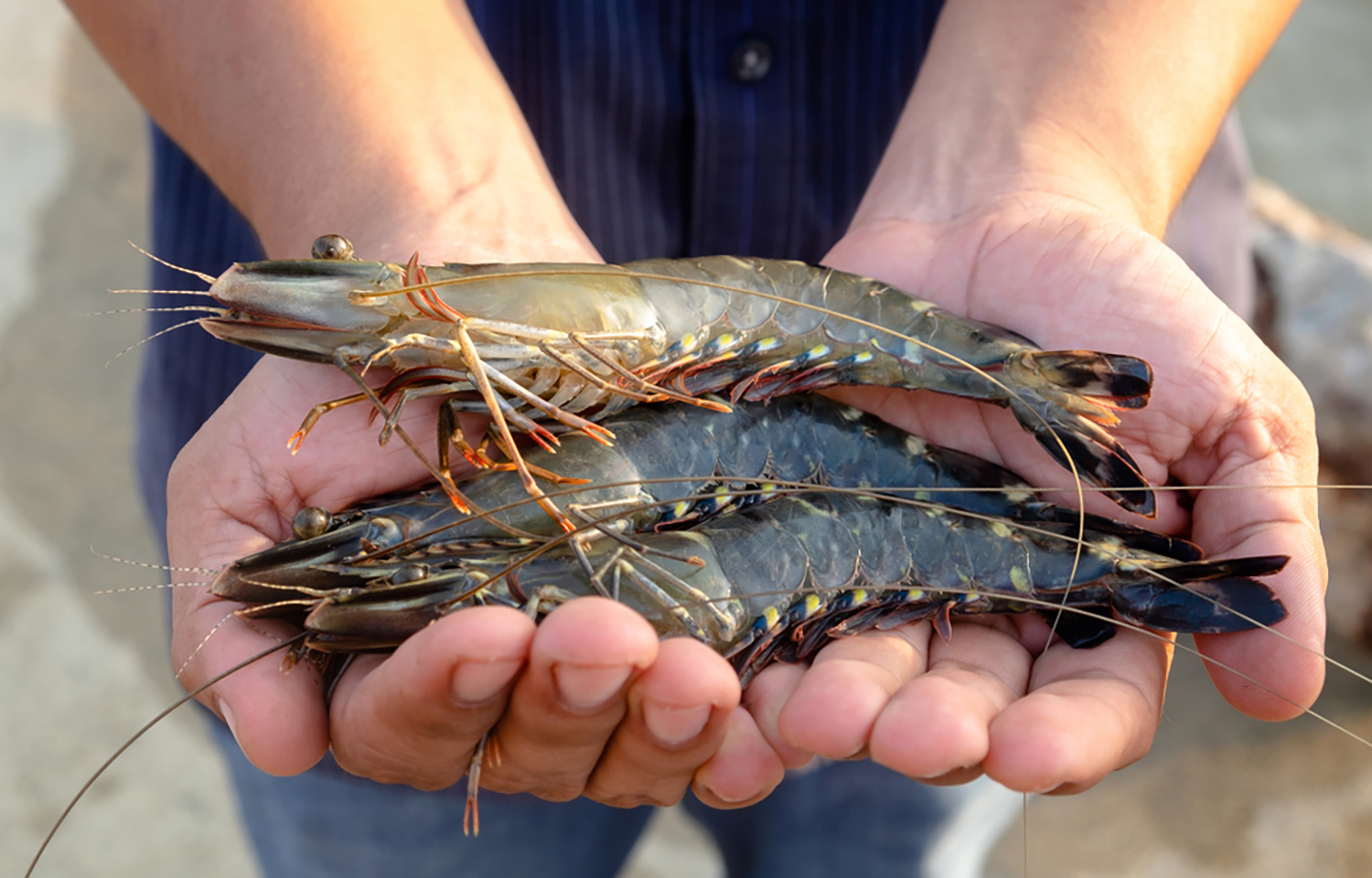With farmgate prices for whiteleg shrimp (Litopenaeus vannamei) decreasing and production costs rising, black tiger shrimp (Penaeus monodon) farming is making a strong comeback, according to Kontali Shrimp Analyst Ida Seljevoll Skancke.
Black tiger shrimp is the second-most cultured shrimp species in the world after whiteleg, or vannamei shrimp, but until 2002, it was the dominant species of farmed shrimp. Disease challenges and the introduction of specific pathogen-free vannamei, though, led many farmers to switch to vannamei.
Now, those trends are flipping yet again as many farmers are finding it too difficult to make money farming vannamei, Skancke said during the recent Kontali webinar, “Seafood Explained: Unlocking Monodon Insights, a Deep Dive with Experts.”
There’s been increasing evidence of monodon’s return in recent years, including a rise in companies entering the broodstock market, she said. As a result, post-larvae (PL) prices should come down from around May 2024 onward, alongside greater availability of healthy stocks.
“There’s definitely some good reasons for farmers to go back to monodon,” she said.
Skancke while vannamei farming has been a “huge success” story, its rapid growth has created instability between current supply and demand. This has, in turn, driven down farmgate prices over the past few years.
“Higher prices for monodon and a lot of genetic improvements have led to a renewed interest, with an increase in production – from 500,000 metric tons [MT] in 2018 to just about 600,000 MT in 2023,” she said.
Kontali’s has found many of the larger shrimp-producing countries have remained stable in their monodon volumes in recent times, but there have been particular production increases in China and India, with India having grown its output by more than 60 percent since 2020. Between 2022 and 2023 alone, India grew its monodon production by more than 25 percent, Skancke said.
According to Skancke, Kontali doesn’t expect rapid growth of monodon production until after 2024.
“We think it’s going to grow in India, for instance, and maybe also China, but we expect many of the other larger producing countries to be stable in production volume," Skancke said. "It also remains to be seen if the growth will come from more farmers farming monodon or improved efficiency among those already producing it."
Manoj Sharma, the managing director of Indian aquaculture firm Mayank Aquaculture, said India is already producing ...








